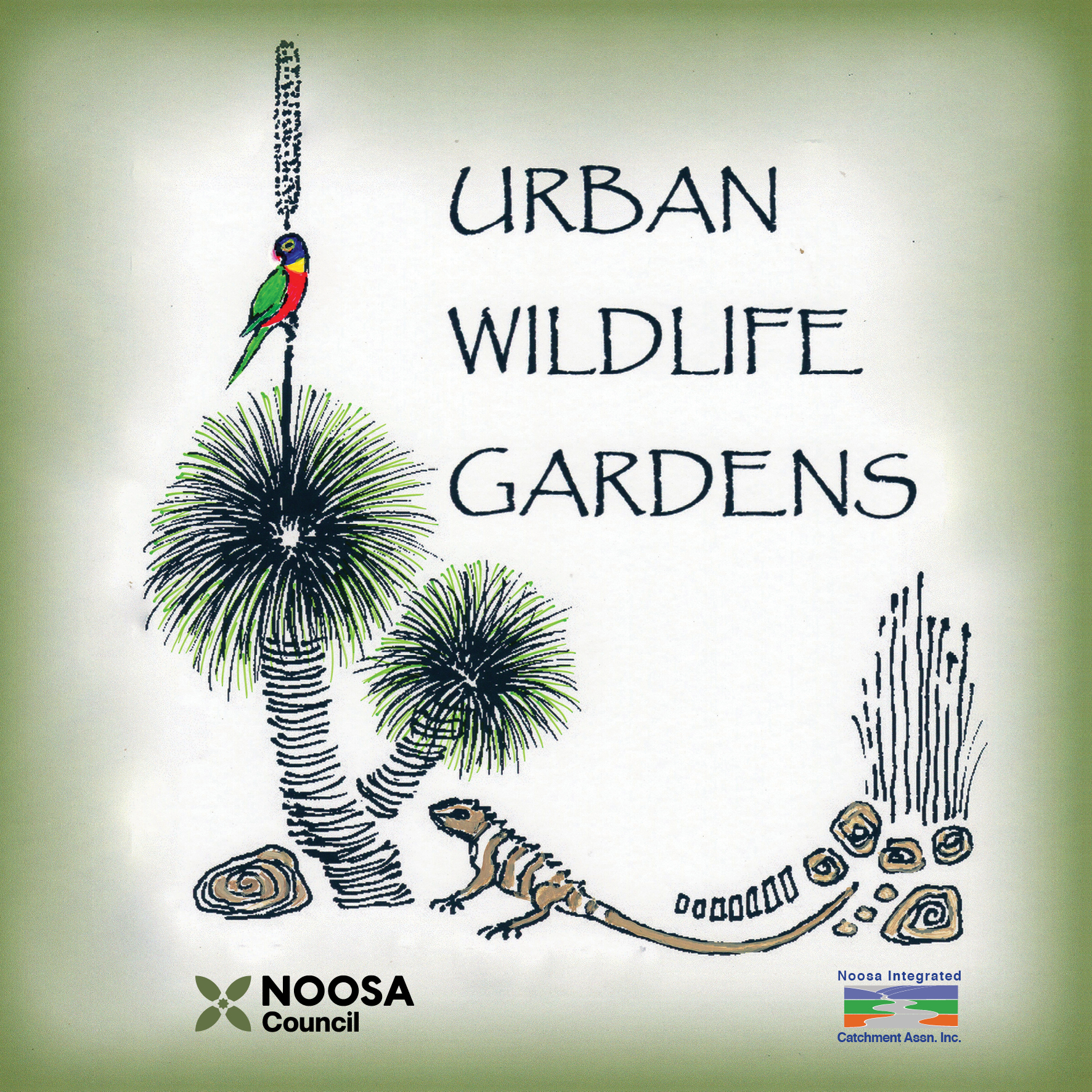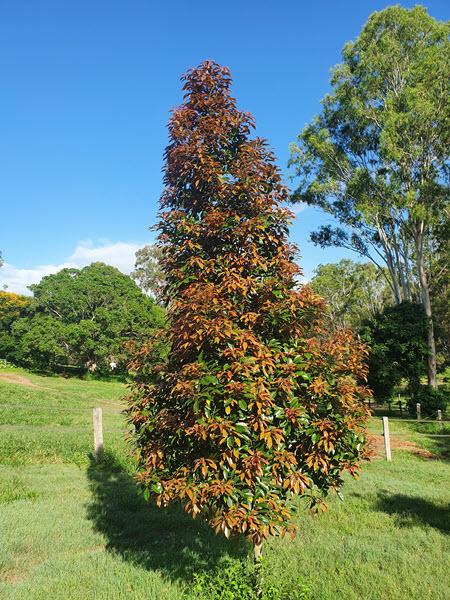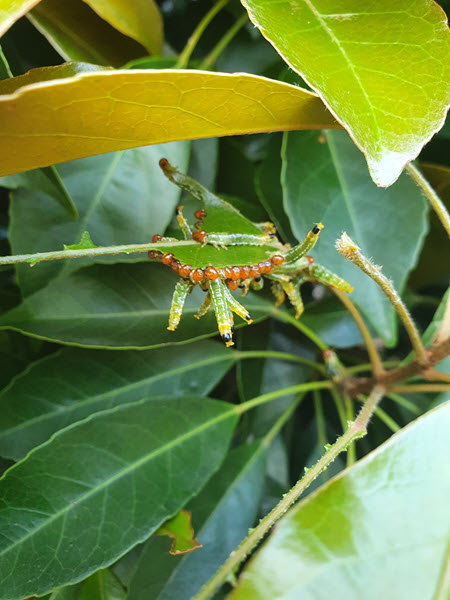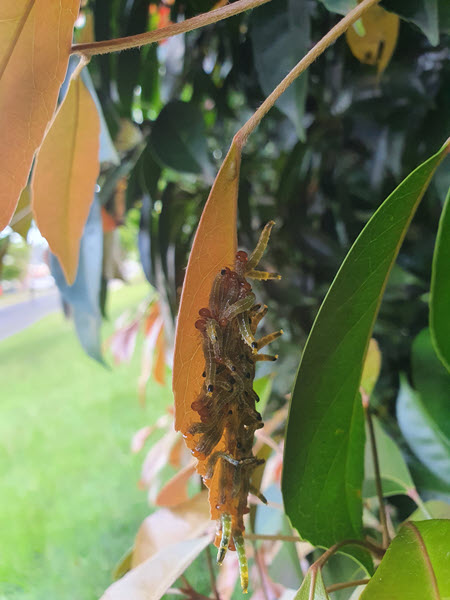Sharing the same name as the market town in the Noosa Hinterland, the Eumundi Quandong is looking very colourful at this time of year.
Species names are usually linked to a botanical feature of the plant. For example, the Blue Flax Lilly is Dianella caerulea. Caerulea is the Latin term for dark blue or azure which is the colour of the flowers and fruit.
In some cases, the taxonomy (European naming system) of a plant relates to the area where it is found, and that’s how this tree got its name.
The Eumundi Quandong is a local rainforest tree that can be seen in street plantings and landscaping throughout the Shire. The pyramid shape and copper coloured new growth make it a very attractive tree and popular with gardeners. Despite being a rainforest tree, they cope well planted in an open situation. The nectar and seeds are food sources for birds, so it is an important habitat tree, however there are some considerations to be aware of before planting Eumundi Quandong in your garden.
The Quandong family has buttress roots. These roots stick out to the side of the stem and can get big. They can be a trip hazard and also cause damage to paths and pipes.
When native plants are found growing in a natural setting, they are in balance within the ecosystem. Insect populations will generally be kept in check by birds other predators and the plants grow at the best distances for growth and function. When humans place plants into a garden setting or rural block, the desired look is not always best for the plant and this causes an imbalance that allows disease and excess insect predation.
The Eumundi Quandong is one of the best examples of how incorrect spacing increases insect populations. Nurseries promote using this tree as a hedge, but they don’t grow in rows in the wild. Some factors that could be involved in the out of balance insect population could be temperature changes and the exposed aspect of hedge planting or prey / predator dynamics. Saw fly caterpillars thrive in these unnatural conditions. They clump together to feed on the leaves, especially the new growth, and can completely defoliate trees. This eating frenzy happens at this time of year. If a storm passes through that is strong enough to knock them off the plant, the leaves will be spared. The tress can recover, even from complete loss of leaves, but this bare stage is not desirable in a garden.
The best way to grow the Eumundi Quandong in a large garden or rural block is to follow nature’s guide and avoid planting them in rows or clumps.
Elaeocarpus eumundi – Wikipedia
Michelle Newall




